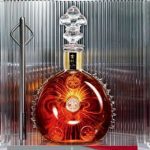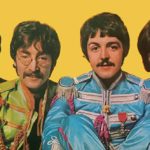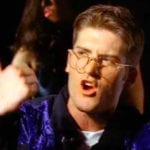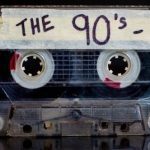 Creepy
Creepy  Creepy
Creepy  Movies and TV
Movies and TV 10 Amazing Lead Actor Ideas for Superhero Movies
 Our World
Our World 10 Crazy Facts about Cycads That Might Surprise You
 Technology
Technology 10 World-Changing Examples of Turning Dumb Technology into Smart Technology
 Pop Culture
Pop Culture Ten Celebrities Who Straight-Up Lied on Home Tours
 Animals
Animals 10 Remarkable Things We’ve Recently Learned about Animals
 Weird Stuff
Weird Stuff 10 Reasons the Psychic Internet Theory Will Blow Your Mind
 Movies and TV
Movies and TV Television’s Top Ten Most Ruthless Serial Killers
 Weird Stuff
Weird Stuff Ten of the Strangest Paraphilias Ever Documented
 Miscellaneous
Miscellaneous 10 Interesting Physics Facts about Bullets
 Creepy
Creepy 10 Unnerving Legends from Around the World
 Movies and TV
Movies and TV 10 Amazing Lead Actor Ideas for Superhero Movies
 Our World
Our World 10 Crazy Facts about Cycads That Might Surprise You
Who's Behind Listverse?

Jamie Frater
Head Editor
Jamie founded Listverse due to an insatiable desire to share fascinating, obscure, and bizarre facts. He has been a guest speaker on numerous national radio and television stations and is a five time published author.
More About Us Technology
Technology 10 World-Changing Examples of Turning Dumb Technology into Smart Technology
 Pop Culture
Pop Culture Ten Celebrities Who Straight-Up Lied on Home Tours
 Animals
Animals 10 Remarkable Things We’ve Recently Learned about Animals
 Weird Stuff
Weird Stuff 10 Reasons the Psychic Internet Theory Will Blow Your Mind
 Movies and TV
Movies and TV Television’s Top Ten Most Ruthless Serial Killers
 Weird Stuff
Weird Stuff Ten of the Strangest Paraphilias Ever Documented
 Miscellaneous
Miscellaneous 10 Interesting Physics Facts about Bullets
10 Iconic Rock Songs That Were Never Released as Singles
Singles are the movie trailers of the music industry. In order to bait the listening public into buying an album or concert ticket, bands and record labels chum the waters with one or two catchy songs.
Who chooses which tracks breathe such rarified air. Sometimes it’s the artist themselves. Other times, it’s a collaborative effort between the musicians, producers, and the label. By and large, the potential hits are chosen by those who sign the paychecks.
As is the case with any gamble, you win some and lose some. And these 10 winners deserved their spots on the singles charts.
Related: Top 20 Best Rock Bands Of All Time
10 “Here Comes the Sun” by The Beatles
“Here Comes the Sun” was the first track on side two of The Beatles’ last recorded album, Abbey Road. The song was one of two on the album penned by guitarist George Harrison. The other Harrison track, “Something,” was released as a single along with “Come Together.”
“Here Comes the Sun” was Harrison’s way of venting about tensions within the band and the group’s current business and legal entanglements. Harrison stated, “‘Here Comes the Sun’ was written at the time when Apple was getting like school, where we had to go and be businessmen: ‘Sign this’ and ‘Sign That.’”
One likely explanation for the song being overlooked was that John Lennon didn’t play on the track. Harrison and Lennon weren’t on the best of terms at the time, and John still had more creative tug than George regarding choosing singles. In hindsight, John should have given peace a chance. When The Beatle’s music became available on iTunes in 2010, “Here Comes the Sun” became the top-selling song in the first week.[1]
9 “Ramble On” by Led Zeppelin
To be fair to “Ramble On,” it was released on one of the most powerhouse classic rock albums of all time: Led Zeppelin II. This was the album that finally knocked The Beatles’ Abbey Road off the top spot on the American charts.
Led Zeppelin only released 10 singles from 1969 to 1979. The band and their manager, Peter Grant, put the focus on live performances and full albums. They had no interest in being pigeon-holed into pumping out radio hits. Grant managed to negotiate a deal with Atlantic Records, which gave the band creative control over releases.
“Whole Lotta Love” and “Living Loving Maid (She’s Just a Woman)” were chosen as being the strongest tracks for a single release, and rightly so. “Ramble On,” with its airy verses and powerful chorus, is steeped in Tolkien mythology, acoustic guitars, and fantastical imagery. The song illustrates the dance between light and dark that became a hallmark of the band’s best work.[2]
8 “Can’t You Hear Me Knocking” by The Rolling Stones
“Can’t You Hear Me Knocking” is the fourth track on The Rolling Stones’ 1971 album Sticky Fingers. The first two and a half minutes of the song are dirty, riff-tastic Rolling Stones. The last four and a half minutes are an improvised, instrumental jam session. The seven-minute and fifteen-second run time made for a tough sell in 1971. In order to improve the chances of radio play, singles were held to around three minutes.
Chop off that end jam, and one is left with just under three minutes of quintessential Stones. The four singles from Sticky Fingers were “Brown Sugar,” “Bitch,” “Wild Horses,” and “Sway.”
“Brown Sugar” and “Bitch” absolutely deserved special treatment. The same could be said for “Wild Horses.” However, “Can’t You Hear Me Knocking” stands miles higher than “Sway” on the cultural relevance scale. Not only does it bear one of Rolling Stone’s most instantly recognizable guitar riffs, but it’s been included in the movie soundtracks for Casino, Blow, Without a Paddle, and The Fighter.
One of those two songs was used in a Martin Scorsese soundtrack. It wasn’t “Sway.”[3]
7 “L.A. Woman” by The Doors
The final studio album for The Doors, 1971’s L.A. Woman, was a blues-soaked return to form for the California quartet. Shortly after Jim Morrison’s 1970 trial for profanity and indecent exposure, The Doors recorded early versions of three songs for their new album.
Two of those songs, “Love Her Madly” and “Riders on the Storm,” were released as the album’s singles (at the behest of Elektra Records executive Jac Holzman).
The third song was the title track, “L.A. Woman.” There’s something undeniable about “L.A. Woman.” It kicks off with a revving motorcycle and driving tempo before Jim Morrison utters the iconic “Well, I just got into town about an hour ago….”. From there, the song takes the listener into the seedy underbelly that was Los Angeles in the late 1960s.
The epic track clocks in at nearly eight minutes, including Morrison’s mantric bridge, “Mr. Mojo Risin.” “Riders on the Storm,” the album’s second single, had two and a half minutes cut from the album version to make it more radio-friendly. Surely Jim Morrison’s metaphoric goodbye to the city of angels warranted at least a B-side release.[4]
6 “Ziggy Stardust” by David Bowie
The album was titled The Rise and Fall of Ziggy Stardust and the Spiders from Mars. It was a concept album about an androgynous musician who falls victim to the rock ‘n’ roll lifestyle as well as his own ego. The linchpin of the album’s narrative is the title track, “Ziggy Stardust.”
“Ziggy Stardust” has been widely acclaimed as not only one of Bowie’s best but one of four Bowie tunes included in “Songs That Shaped Rock and Roll” by the Rock and Roll Hall of Fame. However, the song wasn’t revered by everyone. During the recording of the album, RCA executive Dennis Katz complained that the album did not contain a single. So rather than push for “Ziggy Stardust” to be the single, David Bowie recorded “Starman.”
Bowie himself was more interested in presenting his albums as entire pieces of art, not to be cut up and served on the radio. Because of this, “Ziggy Stardust” never charted.
While “Starman” still sees a good deal of love on classic rock radio, its cultural influence can’t compare to “Ziggy Stardust.” The song and Bowie’s Stardust persona became a major influence on glam rock bands like Suede and T-Rex.[5]
5 “Space Truckin’” by Deep Purple
1972’s Machine Headwould go on to become the group’s best-selling and most impactful record. This was due, in no small part, to the success of the guitar shop anthem “Smoke on the Water.” “Smoke on the Water” was one of four singles released from the album; the others were “Highway Star,” “Lazy,” and “Never Before.”
Now, Machine Head only has seven tracks, four of which were singles. But “Highway Star” is more than deserving, as is “Lazy.” “Never Before” didn’t exactly have the same shelf life as the others.
The record’s last track found its way onto the shelf and remains to this day. “Space Truckin’” has been a mainstay of the band’s live shows and has been included in all three of their greatest hits compilations. The track’s opening thirty seconds are a thundering force of Jon Lord’s organ, Roger Glover’s bass, Ritchie Blackmore’s guitar, and Ian Paice’s drumkit.
Vocalist Ian Gillan’s space-age lyrics and glass-cracking falsetto make “Space Truckin’” one of the great road trip singalong rockers when one finds themselves dancing around the borealis and space truckin’ ’round the stars.[6]
4 “Stone Cold Crazy” by Queen
“Stone Cold Crazy” was the eighth track from Queen’s 1974 album Sheer Heart Attack. A departure from the band’s operatic sound, “Stone Cold Crazy” has been described by Q Magazine as “thrash metal before the term was invented.”
The song was performed live at almost every Queen concert from 1974 to 1978 and was included on their 1992 greatest hits album Classic Queen. It was even covered by Metallica in 1990 and performed live by Metallica’s James Hetfield, Black Sabbath’s Tony Iommi, and Queen at the Freddie Mercury Tribute Concert in 1992. What the song was not, however, was a single.
“Killer Queen” was the only song released as a single in the U.S. (the track “Now I’m Here” was a single in the UK). Now, “Killer Queen” is tough to argue with as it bears all the elements of a great Queen song. But what “Stone Cold Crazy” lacked in finesse, it made up for in blistering fast drums and guitar.
“Stone Cold Crazy” would have been a well-placed follow-up single, showcasing what the band could do when they stripped away the bells and whistles and just rocked.[7]
3 “Going Mobile” by The Who
1971’s Who’s Next is arguably the most influential album of The Who’s illustrious career. Touting a track list that involves “Baba O’Riley,” “Bargain,” “Behind Blue Eyes,” and “Won’t Get Fooled Again,” Who’s Next is responsible for half of all the CSI theme songs.
There is this one quaint little tune in the middle of the album called “Going Mobile.” It was written by guitarist Pete Townshend and was recorded without lead singer Roger Daltry (Townshend covered vocal duties on the track). The music is tonally uplifting, and the lyrics are about one man’s love of traveling the highways in a mobile home. It may lack the opulence of other Who classics, but it showed what Townshend, Keith Moon, and John Entwistle could do when they sat in a room together and just played.
The record’s singles are rather undeniable: “Baba O’Riley,” “Won’t Get Fooled Again,” and “Behind Blue Eyes” were released as singles. Those songs are great. The thing is, The Who later released other tracks from the Who’s Next sessions as singles. Guess which wasn’t included. “Going Mobile.” The track was given its proper due when it was included in the group’s greatest hits album, Who’s Better, Who’s Best: This Is the Very Best of The Who.[8]
2 “Casey Jones” by the Grateful Dead
Behind “Truckin,’” “Casey Jones” may be the most recognized Grateful Dead song. Released on the band’s 1970 record, Workingman’s Dead, “Casey Jones” became and remained a staple of classic rock radio. Grateful Dead performed the song live over 300 times after the record’s release.
Despite the laid-back sound of the track, the lyrics were reflective of what was happening with the band at the time. Cocaine use among the band was escalating, eventually resulting in the arrest of frontman Jerry Garcia for drug possession.
Some discussion took place about cleaning up some of the lyrics for the sake of radio play. Since cocaine was the theme of the song, the band decided to leave it as is. While lyrics like “high on cocaine” may raise a few eyebrows, “lugging propane” just wasn’t gonna cut it.
“Uncle John’s Band” was the only track from the album that was released as a single, and it’s a single-worthy track. In the annals of classic rock history, though, it just ain’t “Casey Jones.”[9]
1 “YYZ” by Rush
For most bands, a four-and-a-half-minute instrumental isn’t likely to get top billing as an album single. Canadian rock trio Rush was not like most bands. Renowned for their virtuosic musicianship, Rush fans leaned into the group’s lengthy musical interludes. Rush’s 1978 record, Hemispheres, even featured a nine-minute instrumental track called “La Villa Strangiato.”
“Tom Sawyer,” the biggest hit of the band’s career, was chosen as the lead single along with “Limelight.” “Vital Signs” was released as a single soon after.
Casual fans can agree that “Tom Sawyer” and “Limelight” are two of the group’s most well-known tunes and deserved individual attention. More hardcore fans could also make an argument for “Vital Signs.” The crime was omitting “YYZ” from contention.
Besides being a mainstay of the band’s live shows, “YYZ” was the only track from Moving Pictures that was nominated for a Grammy. In 1982, “YYZ” was up for “Best Rock Instrumental.”
Over the years, “YYZ” has emerged as a fan favorite and withstood the test of time. Besides, if it was good enough for the Grammys, it was good enough for the radio.[10]








